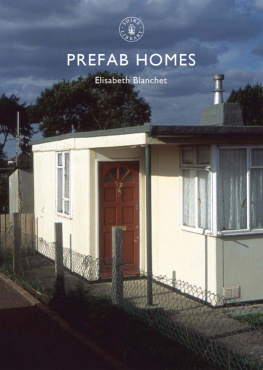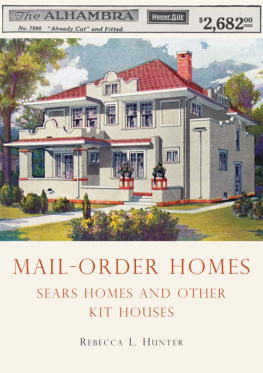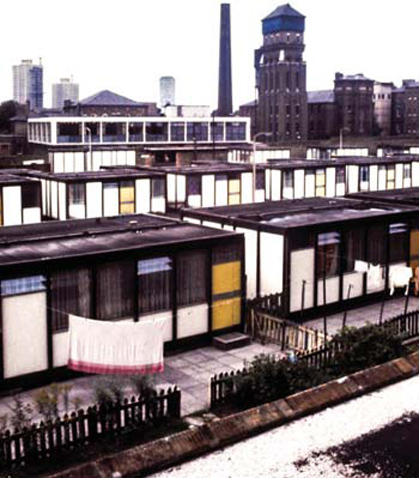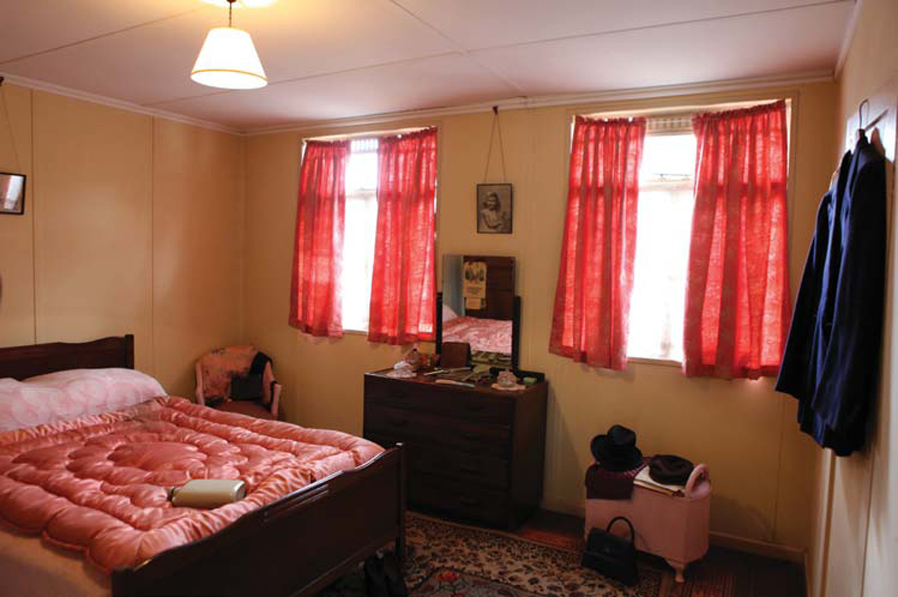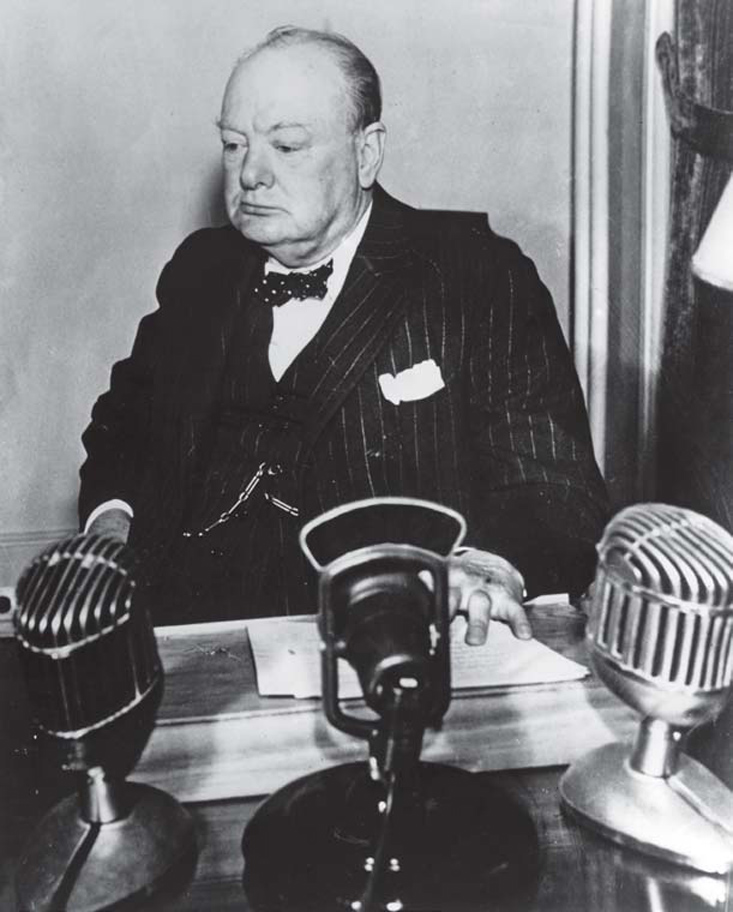PREFAB HOMES
Elisabeth Blanchet
LCC prefabs in Kennington, London, 1973.
The AIROH back bedroom at St Fagans has two windows onto the back garden and a wall with original fitted cupboards and wardrobe.
CONTENTS
INTRODUCTION
T HE F IRST W ORLD War provided a new impetus to improve social housing in Britain, when the poor health of many new army recruits was noted with alarm. This led to a campaign known as Homes Fit for Heroes. In 1919 the government requested councils to provide housing, helping them to do so through subsidies. Under the Housing Act 1919, half a million new houses were planned. As the economy weakened in the early 1920s, however, funding had to be cut, and only 213,000 homes were completed under the Acts provisions.
The 1919 Act often known as the Addison Act after its author, Dr Christopher Addison, the Minister of Health was a significant step forward in housing provision. Housing became a national responsibility, and local authorities were given the task of developing new accommodation for working people.
Many houses were built for artisans, clerks, and the semi-skilled working classes, who could now afford to leave the inner cities. The worlds largest planned suburb was built at Becontree in Essex, while good quality suburban housing was planned around Leeds, Birmingham, Liverpool, Manchester, and Sheffield.
By the 1920s, not much had been done to resolve the problem of inner-city slums. However, this changed with the new Housing Act of 1930, which obliged local councils to clear all slums and provided subsidies to rehouse their inhabitants. This single act led to the building of 700,000 new homes. Under the provisions of the inter-war housing acts, local councils built a total of 1.1 million homes.
Still, the Homes Fit for Heroes promise failed to materialise entirely, as Grandad, from the BBCs Only Fools and Horses, points out in his description of the wartime government policy: They promised us homes fit for heroes; we got heroes fit for homes! By the end of the Second World War, Winston Churchill and his government had new heroes to welcome back and house, this time in prefabs.
WINSTON CHURCHILLS PROMISE OF 500,000 EMERGENCY HOMES
Sunday 26 March 1944. The end of the Second World War is finally approaching, as Prime Minister Winston Churchill points out in his BBC broadcast speech, Our Greatest Effort is Coming. In a part of his speech, he anticipates the huge post-war housing shortage and the reconstruction effort: But now about a million homes have been destroyed or grievously damaged by the fire of the enemy. This offers a magnificent opportunity for rebuilding and replanning, and while we are at it we had better make a clean sweep of all those areas of which our civilization should be ashamed.
Churchill declared a new war, but this time, on poor housing. Using military words, he unveiled his strategy:
The first attack must evidently be made upon houses which are damaged, but which can be reconditioned into proper dwellings The second attack on the housing problem will be made by what are called the prefabricated, or emergency, houses. On this the Minister of Works, Lord Portal, is working wonders. I hope we may make up to half a million of these, and for this purpose not only plans but actual preparations are being made during the war on a nationwide scale. Factories have been assigned, the necessary set-up is being made ready, materials are being ear-marked as far as possible, the most convenient sites will be chosen, the whole business is to be treated as a military evolution handled by the government with private industry harnessed to its service.
Winston Churchill delivering a speech at the BBC during the Second World War.
In Churchills speech, there is a hint of fear. Imagine an army of demobilised men with no one to fight and with no homes or employment housing these men and their families was a priority. The Blitz and the continuous bombings of ports and big industrial cities destroyed 3 million homes, and by March 1944 they were still more raids to come. Vicious weapons, such as the V-2 rockets, relentlessly damaged the country, killing civilians, and wiping out their homes.
When the Blitz was called off in May 1941, 43,000 people had been killed and 1.4 million had been made homeless. A quarter of British dwellings had been destroyed or severely damaged when the Germans finally stopped their attack in March 1945. Most of the bombings affected working-class areas homes and factories were the Germans prime targets. But it wasnt just London that suffered; many other British cities were attacked too.
In order to fight the enemy, Britain was transformed into a war machine. All industries shared the same target: to win the war. In March 1944, the UK was still producing ammunition and aircraft. There was going to be a surplus and the conversion of factories for mass production of prefabricated houses appeared to be a good solution.
The Homes Fit For Heroes policy, started in 1919, continued during the Second World War, but was slowed down by the diminished labour force and the lack of materials. The construction rate was almost a tenth of what it had been before 1939 and the maintenance of existing homes was not kept up. Living conditions declined, leaving people without glass in their windows or with tarpaulin on their roofs.
During the war, the issue of housing was first raised in the Kings Speech to Parliament on 11 November 1942. Churchill formed a cross-party committee, under the chairmanship of Sir George Burt, to address the problem. The committee sent British engineers to America to find out how the United States intended to address its needs for post-war housing. The outcome of the Burt Committee was a favourable view of prefabricated housing as a solution to the housing shortage, and Churchill announced this in his Temporary Housing Programme: All these emergency houses will be publicly owned and it will not rest with any individual tenant to keep them in being after they have served their purpose of tiding over the return of the fighting men and after permanent dwellings are available. As much thought has been and will be put into this plan as was put into the invasion of Africa.
The plan was to build 500,000 new technology temporary houses as soon as the war ended, and this passed into law as the Housing (Temporary Accommodation) Act, 1944. Over the next four years, 300,000 prefab houses were to be built in Britain, with a structural lifetime of between ten to fifteen years.
To achieve Churchills ambitious housing plan, the Ministry of Works (MoW) created research institutes to work on the design of the new houses. People had high expectations and felt their homes should contain the latest electric appliances, as well as indoor toilets and bathing facilities. The government took this into account and as well as installing a fridge and a gas cooker, it worked to build a house that contained a coal fire and a back boiler to create central heating and a constant supply of hot water. In 1951 about a third of British households were still without a plumbed-in bath, so this was luxury.

